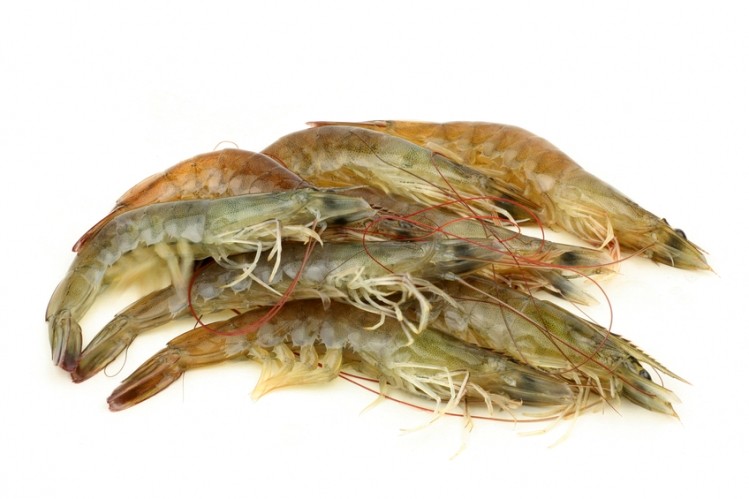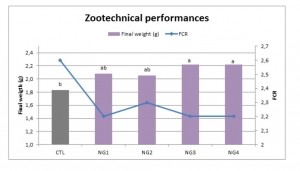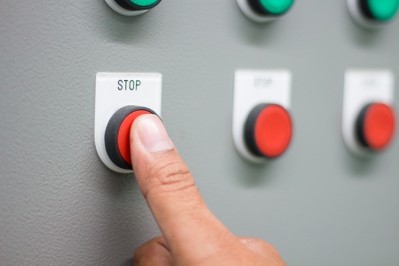Grape extract product touted as alternative to vitamin E in shrimp

The Angers headquartered firm said replacement of that vitamin with the grape extract, an uncommon approach, led to an improvement of the feed conversion ratio (FCR) in all supplemented groups. No difference was observed in terms of mortality between groups, it added.
Paul Engler, R&D manager of the company’s Nor-Grape range, talked to us about the outcome of that study.
He said the results came as a kind of surprise to Nor Feed.
Litopenaeus vannamei, known as the Pacific white or whiteleg shrimp, is the most widely cultured shrimp in the western hemisphere.
Shrimp is a major production in aquaculture. Mainly raised in 50 countries, its production ranks second in the aquaculture industry, in value. World shrimp consumption increased from 0.4 kg/person in 1961 to 1.8 kg/person in 2013, according to data from the Food and Agriculture Organization (FAO) of the UN.
“We were not expecting that Nor-Grape 80 fed shrimps would perform better than those fed the control diet with 100 ppm vitamin E. We had been expecting the trial groups to be equivalent to the control group in terms of final weight or FCR, not better.”
Background to research
Nor Feed, he explained, had been working with the Department of Aquaculture of the National Taiwan Ocean University on a variety of farmed fish research topics. Shrimp, in particular, was one of the species they wanted to explore more fully in terms of that collaboration, he said.
“We decided to conduct a study on the Vannamei shrimp species during the starter period, which is a critical time due to oxidative stress. The [Taiwanese] researchers had noted some publications showed improved performance from adding antioxidants into the diet of post-larval shrimp. They wanted to test the effect of Nor-Grape 80 as an alternative to vitamin E.”
Initially, Nor Feed was not intending to remove all the vitamin E from the trial diets. "We know that, usually, you don’t replace all of the vitamin E [in a diet]. Typically, a vitamin is included [in a diet] because a nutritional need has been established. However, they [the university team] wanted to see whether it was feasible or not.”
In aquaculture, he said, the quantities of vitamin E used are quite high due to the fact the actual nutritional requirements in terms of that vitamin are not well established: "In fact, that is something that is being studied by quite a few research groups around the world."
He cautioned, though, that while there wasn’t any added vitamin E in the diets of the experimental Nor-Grape groups, researchers always have to take into consideration the fact that there can be vitamin E present in the other raw materials of the shrimp diet, for example in fishmeal or in plant meals.

Trial details
The trial, which was of eight weeks duration, was carried out at the National Taiwan Ocean University in Keelung. Five diets groups were included in the study, comprising:
- Control group: 100 ppm vitamin E
- NG1: 0 ppm vitamin E + 50 ppm Nor-Grape
- NG2: 0 ppm vitamin E + 100 ppm Nor-Grape
- NG3: 0 ppm vitamin E + 150 ppm Nor-Grape
- NG4: 0 ppm vitamin E + 200 ppm Nor-Grape
All the diets also comprised the cellulose and binder raw materials typically found in shrimp feed; they were combined with a classic mineral and vitamin mix excluding vitamin E. The form of the feed was cold extruded pellets, which were 3mm in diameter.
The fish groups were fed three times daily by hand to satiation for the duration of the trials. The feed not consumed by the shrimp and the feces were cleared away by the technicians on a daily basis.
The size of the shrimps at the start of the trial was 20mg. Weight gain (WG), feed conversion ratio (FCR) and survival rate were recorded.
Results
In terms of best performance, the team saw a significant difference between the groups fed the higher doses of the grape extract – NG3 150 ppm and NG4 200 ppm – in terms of WG and FCR compared to the vitamin E only control group. The FCR was improved in all four Nor-Grape groups compared to the control group. “In terms of mortality, we had similar results across all groups.”
He said it would appear that the optimal inclusion rate for the starter period of Pacific White shrimp would be 150 ppm to 200 ppm of Nor-Grape 80.
“We usually don’t go to such high dosage levels, though. For example, in our EU registration dossier on Nor-Grape 80, we recommend dosage levels of between 5 ppm to 100 ppm in a complete feed. Also, we don’t know if the results would be the same throughout the whole shrimp production cycle at those higher dosage levels."
The fact that the team saw such a positive outcome in the shrimp given the Nor-Grape supplemented diets would indicate that by diversifying the sources of antioxidants, scientists can play on different metabolic pathways and, therefore, achieve a more balanced antioxidant defense in the animal, leading to improved performance later on, said Engler.
Mode of action
He said the grape extract has also been tested and used in salmon, sea bream, sea bass and grey mullet among other aquaculture species.
“We are working not only on shrimp but on multiple species and trying to better understand the mode of action of Nor-Grape 80, on a more general basis. For us at Nor Feed, it is very important to know how exactly how the extracts work, so as to provide more concrete data for our clients and users.”
Peer review publication of Engler's own PhD research on the Nor-Grape range is pending.














